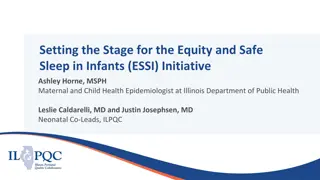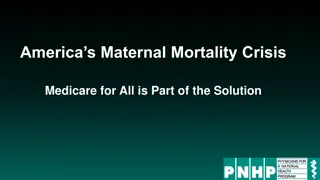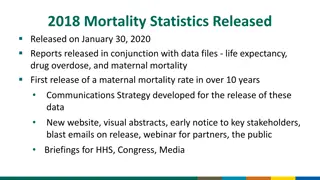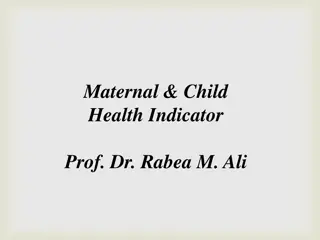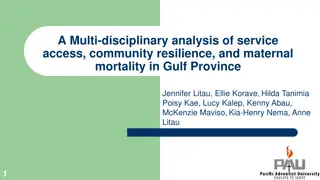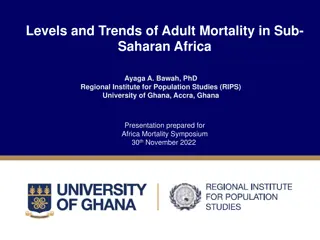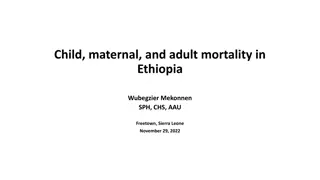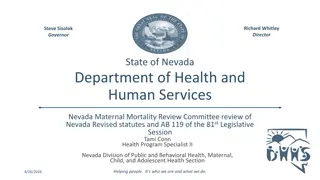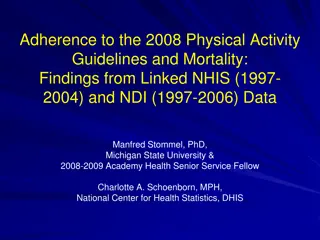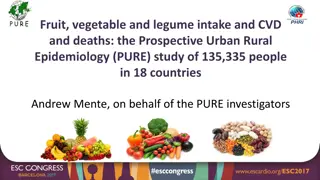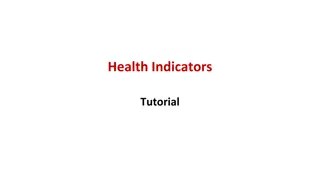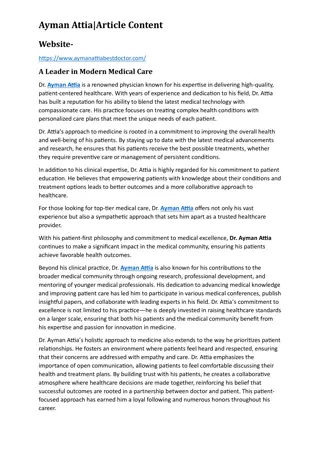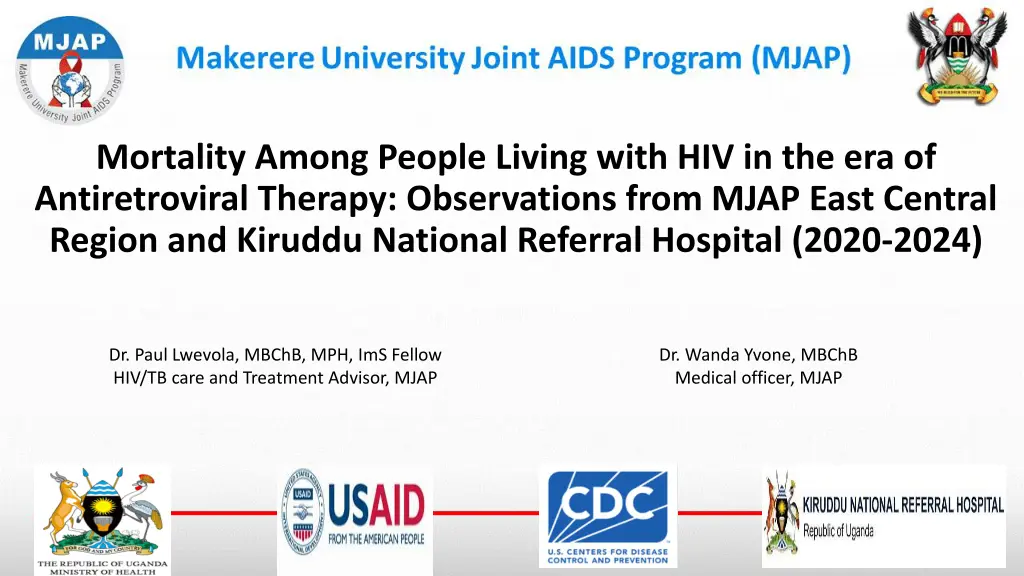
Observations on HIV Mortality in East Central Region and Kiruddu National Referral Hospital
Explore insights into mortality among people living with HIV in Uganda during the antiretroviral therapy era, highlighting causes of death and program objectives from MJAP in the East Central region and Kiruddu National Referral Hospital.
Uploaded on | 0 Views
Download Presentation

Please find below an Image/Link to download the presentation.
The content on the website is provided AS IS for your information and personal use only. It may not be sold, licensed, or shared on other websites without obtaining consent from the author. If you encounter any issues during the download, it is possible that the publisher has removed the file from their server.
You are allowed to download the files provided on this website for personal or commercial use, subject to the condition that they are used lawfully. All files are the property of their respective owners.
The content on the website is provided AS IS for your information and personal use only. It may not be sold, licensed, or shared on other websites without obtaining consent from the author.
E N D
Presentation Transcript
Mortality Among People Living with HIV in the era of Antiretroviral Therapy: Observations from MJAP East Central Region and Kiruddu National Referral Hospital (2020-2024) Dr. Paul Lwevola, MBChB, MPH, ImS Fellow HIV/TB care and Treatment Advisor, MJAP Dr. Wanda Yvone, MBChB Medical officer, MJAP
Background Background Before ART (2003), HIV mortality in Uganda was high (>78,000 deaths/year) Uganda started distributing free antiretrovirals-2004 AIDS mortality deaths reduced from >78,000 in 2003, to 60,000 in 2010 and 20,000 by 2022 ART: Antiretroviral Therapy; AIDS: Acquired Immunodeficiency Syndrome
Causes of death before and after ART: Declining communicable and AIDS defining malignancies to chronic non-communicable conditions Before ART Test and Treat era Tuberculosis Non-communicable diseases o Cardiovascular diseases, diabetes, chronic kidney disease, mental health issues (depression & substance abuse) Other infections o Cryptococcal meningitis o Bacterial infections (Pneumonia, Bacteremia, GI infections o Cytomegalovirus infections o Hepatitis B and C AIDS related deaths despite ART o Advanced HIV disease (TB) o ART failure Non-AIDS defining cancers o Liver cancer, lunger cancer, cancer of the cervix HIV wasting syndrome (wasting, muscle atrophy, chronic diarrhea) HIV defining cancers-Kaposis sarcoma Kalyesubula et al. (2019); Nasuuna et al. (2020); Hermans et al. (2017); Castro et al. (2021); Ocama et al. (2018); Kintu et al. (2022); Byaruhanga et al. (2021); Cox et all., 2016
Objectives Objectives To describe mortality among PLHIV receiving care from the MJAP program East Central region: The community-based program (October 2021-September 2024) - to gain insights into the public health aspects of the program Central region: The hospital-based program at Kiruddu National Referral Hospital in Kampala (2020-2024) - to gain insights into the clinical care aspects of the program To better understand the reasons why people with HIV are dying in the era of Antiretroviral Therapy
Methods: Community based program Methods: Community based program East Central region East Central region The MJAP program in the EC is a USAID funded 5-year (2021-2026) activity supporting public health facilities to improve accessibility, availability and utilization of comprehensive HIV/TB services Coverage includes the 11 districts of Busoga region and Jinja City; Busia district-Bukedi region Building capacity of public health facilities to notify, audit and certify HIV/TB deaths at HC IVs and district hospitals Previously trained Community Health Workers (CHWs) conduct verbal autopsies following community deaths using the NIRA verbal autopsy form Deaths occurring at facilities are audited monthly at a facility meeting (HC IVs and above) NIRA: National Identification and Registration Authority
Methods: Hospital based program - Central Region MJAP collaboration with Kiruddu Hospital started in 2020 To reduce high mortality (31%) among clients among presenting with Advanced HIV Disease (AHD) Supports clinical, laboratory and radiological services to patients with AHD Mortality documentation Mortality audit meetings done monthly Facility team: doctors, clinical officers, nurses, laboratory technicians, nutritionists, administrative staff Review deaths that occurred at the facility in the last month Identify factors associated with the death; ascertain possible causes, prevalent OIs and comorbidities at admission Engagement of hospital administration at subsequent feedback meetings
Data collection Data collection o At community level: CHWs conduct verbal autopsy, document possible causes of deaths and report through the facility level surveillance focal persons o At facility level, mortality audit findings are documented and reported in DHIS2 (monthly) and the PEPFAR reporting systems (quarterly) o Deaths analyzed quarterly, disaggregated by possible cause, age and sex.
Data analysis for this report Data analysis for this report Describing mortality Community program - estimated proportion dying out of all PLHIV in care Hospital program - estimated proportion dying out of all PLHIV admissions Causes of death Estimated proportions in each category of the PEPFAR classification of causes of death We also captured anecdotes from verbal autopsy reports for community deaths Note: Cause of death is equivalent to a patient having that specific diagnosis at the time of death (as assigned by the last physician to review the client before death)
Classification of causes of death among PLHIV (PEPFAR Classification of causes of death among PLHIV (PEPFAR- -TX TX- -ML MER guide) ML MER guide) Classification Inclusions HIV Disease resulting in TB Tuberculosis HIV Disease resulting in other infections and parasitic diseases Hepatitis B, C&D, COVID 19, Malaria, GI infections other than TB HIV Disease resulting in Cancers Includes HIV and non-HIV related cancers (CXCA, Kaposis, HCC) Non-infectious/non-malignant causes related to HIV Acute HIV syndrome, generalized lymphadenopathy, hematological and immunological abnormalities, organ failures Other Natural causes not directly related to HIV Cardiovascular, Kidney, Liver diseases, mental disorders, metabolic disorders, borne disorders Non-natural causes Trauma, Suicide, Accidents, Injury Unknown Unknown in these data means that the death is not yet audited
Mortality proportions Mortality proportions - - Community program Community program Causes of death among audited PLHIV deaths Thru 1st Oct 2021 30th Sept 2024; a total of 1,784 deaths were reported among all PLHIV in care 52% male 95% aged 15+yrs. 23, 3% 26, 3% 72, 10% 129, 17% 79, 11% On average, 149 deaths were reported per quarter during the analysis period, representing 0.2% mortality per quarter (average Tx-Curr: 66,772 clients) 414, 56% A total of 743 deaths out of 1,784 (42%) were audited. TB Cancers Other infections Other non-infections Other Natural causes Non-natural causes
Bugiri Hospital Case Study For the period October 2023 to sept 2024, the hospital reported 32 PLHIV deaths 23/32 (72%) of deaths occurred in the community Verbal autopsies were conducted in 18/23 (78%) Cause of death could not be established in 9/18 (50%) deaths Quotes from linkage facilitators who do verbal autopsies When the clients get symptoms, they are rushed to the nearest clinics where they die. If you do the autopsy early, you may get some records at the clinics or with family members We learn of the clients' death usually after a month and beyond, after they miss appointment; at this time, most family members have lost related medical records family members report symptoms like headache, fever, vomiting etc, then the client died, which makes it difficult to establish the cause of death . We need more training to be able to question symptoms and signs to establish cause of death, the verbal autopsy form also needs revision to capture symptoms
Mortality trends among PLHIV with AHD - Kiruddu National Referral Hospital MJAP Program 2020-2024 Baseline mortality before starting the mortality audits was at 31%. Thru March 2020 to September 2024, mortality ranged from 22% to 26%. Suggesting mortality is unacceptably still high (Expected mortality at Kiruddu is estimated at 10%)
Mortality over the years and common diagnoses at death Co infections include; pneumonia, malaria, urinary tract infections, gastro-enteritis, bacteremia and H. pylori infection.
Characteristics of HIV in-patients at KNRH from October 2023 to September 2024
OIs and comorbidities among HIV inpatients at KNRH from October 2023 to September 2024
Conclusions Conclusions - - the community program Mortality in the community program is generally low However, majority of the deaths occur in the community and not at the facilities Natural causes leading cause of death (cardiovascular, kidney, Liver diseases, mental disorders, metabolic disorders, borne disorders) Verbal autopsies were useful but with challenges e.g., timeliness of conducting the autopsies 16
Conclusions Conclusions - - the Hospital program Mortality is still unacceptably high for PLHIV inpatients Sepsis and infections are common and persisting over time Functional assessment at admission was predictive of mortality TB is still common as a diagnosis at death For comorbidities, cardiovascular disease, malnutrition, renal disease and anemia were all common among admitted PLHIV
Best practices Training of community and facility health workers on death audits and verbal autopsies Printing and availing mortality audit tools (HIV/TB mortality audit tools, HMIS 100 forms and verbal autopsy forms) Monthly reports of deaths and audits by HC IVs and Hospitals are being submitted to program at increased coverage Multi-disciplinary review of audit findings to address quality of care happening more frequently 18
Recommendations for improved programming Recommendations for improved programming Provide more training and tools for health workers to audit and report deaths Targeted interventions for PLHIV (timely seeking of care, sensitization on healthy living) Strengthen tertiary care in HIV programs, e.g., the Kiruddu Hospital Program Treatment program should pay more attention to cardiovascular disease, malnutrition, renal disease and anemia Novel interventions to improve community death surveillance and autopsy processes
Next steps for scientific investigation Next steps for scientific investigation Complete the auditing of all deaths in the program Provide mentorship to health workers to improve skills in conducting verbal autopsies and explore best approaches for doing this. More studies to better understand deaths happening in the community Evaluate and address data gaps at facility audits and community autopsies Engage different stakeholders on more systemic analysis of mortality in MJAP and in the general HIV and AIDS program
Acknowledgements Acknowledgements Entities Ministry of Health PEPFAR USAID CDC Uganda AIDS Commission MJAP Implementing partners District Local governments PLHIV networks Individuals Dr. Fred Semitala Dr. Michael Kiyingi Dr. Rogers Katwesigye Mr. Nelson Mugume Mr. Wilson Musene Mr. Shafik Malende Dr. Seremba Emmanuel Dr. Asiimwe Stephen 21
Thank You Thank You USAID s Local Partner Health Services-East Central Activity and the Kirrudu Hospital AHD Program are implemented by Makerere University Joint AIDS Program (MJAP) with support from United States Agency for International Development (USAID) and Centers for Disease Control (CDC).

